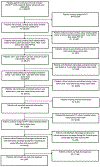Comparison of Selective vs Empiric Pharmacologic Preventive Therapy of Kidney Stone Recurrence With High-Risk Features
- PMID: 35182586
- PMCID: PMC9232879
- DOI: 10.1016/j.urology.2021.12.037
Comparison of Selective vs Empiric Pharmacologic Preventive Therapy of Kidney Stone Recurrence With High-Risk Features
Abstract
Objective: To compare the frequency of stone-related events among subgroups of high-risk patients with and without 24-hour urine testing before preventive pharmacological therapy (PPT) prescription. While recent studies show, on average, no benefit to a selective approach to PPT for urinary stone disease (USD), there could be heterogeneity in treatment effect across patient subgroups.
Materials and methods: Using medical claims data from working-age adults and their dependents with USD (2008-2019), we identified those with a prescription fill for a PPT agent (thiazide diuretic, alkali therapy, or allopurinol). We then stratified patients into subgroups based on the presence of a concomitant condition or other factors that raised their stone recurrence risk. Finally, we fit multivariable regression models to measure the association between stone-related events (emergency department visit, hospitalization, and surgery) and 24-hour urine testing before PPT prescription by high-risk subgroup.
Results: Overall, 8369 adults with USD had a concomitant condition that raised their recurrence risk. Thirty-three percent (n = 2722) of these patients were prescribed PPT after 24-hour urine testing (median follow-up, 590 days), and 67% (n = 5647) received PPT empirically (median follow-up, 533 days). Compared to patients treated empirically, those with a history of recurrent USD had a significantly lower hazard of a subsequent stone-related event if they received selective PPT (hazard ratio, 0.83; 95% confidence interval, 0.71-0.96). No significant associations were noted for selective PPT in the other high-risk subgroups.
Conclusion: Patients with a history of recurrent USD benefit from PPT when guided by findings from 24-hour urine testing.
Copyright © 2022 Elsevier Inc. All rights reserved.
Figures
Comment in
-
24-Stunden-Urin doch nicht immer überflüssig.MMW Fortschr Med. 2022 Mar;164(6):10. doi: 10.1007/s15006-022-0846-7. MMW Fortschr Med. 2022. PMID: 35332464 German. No abstract available.
References
Publication types
MeSH terms
Grants and funding
LinkOut - more resources
Full Text Sources



